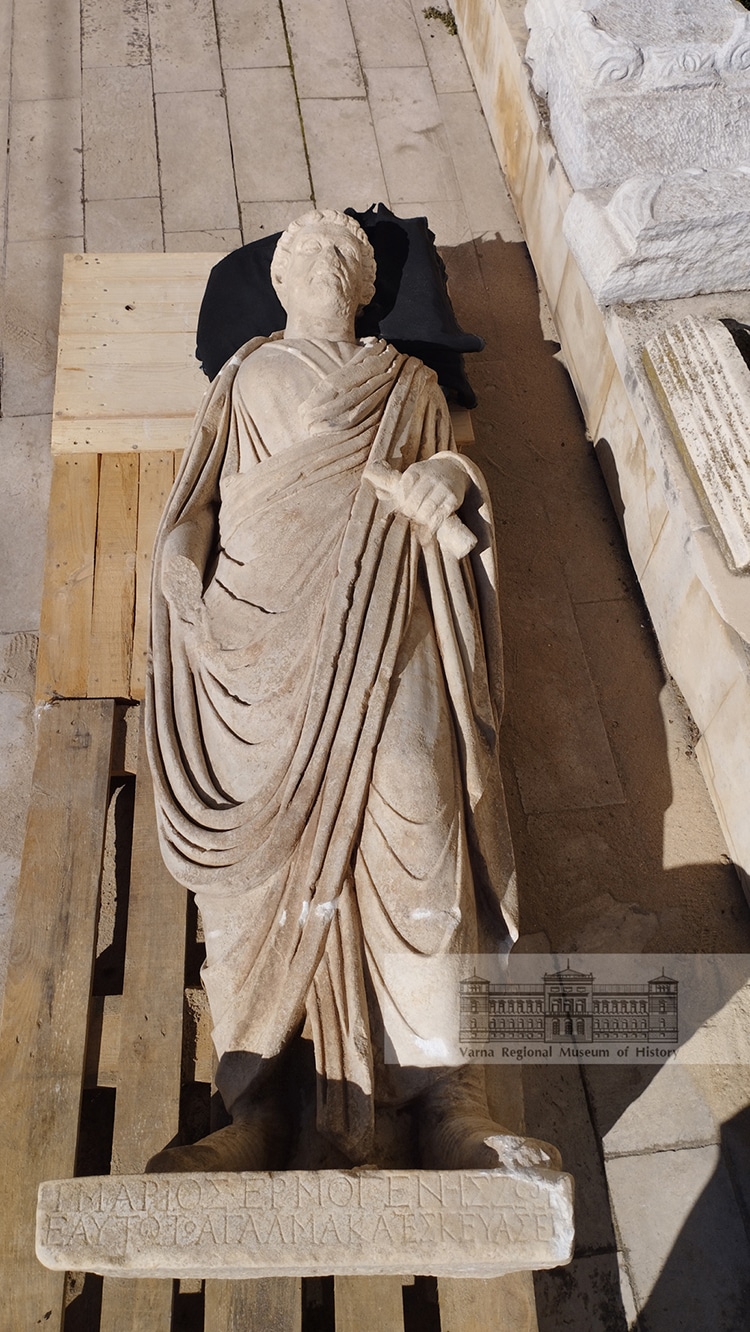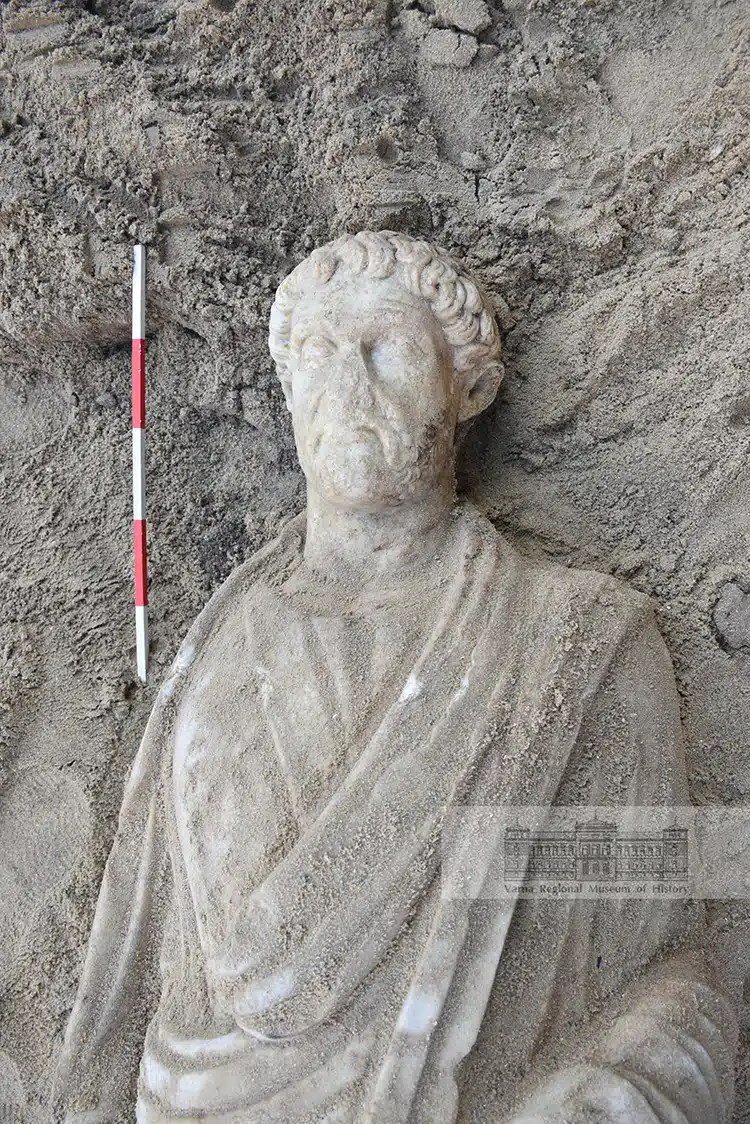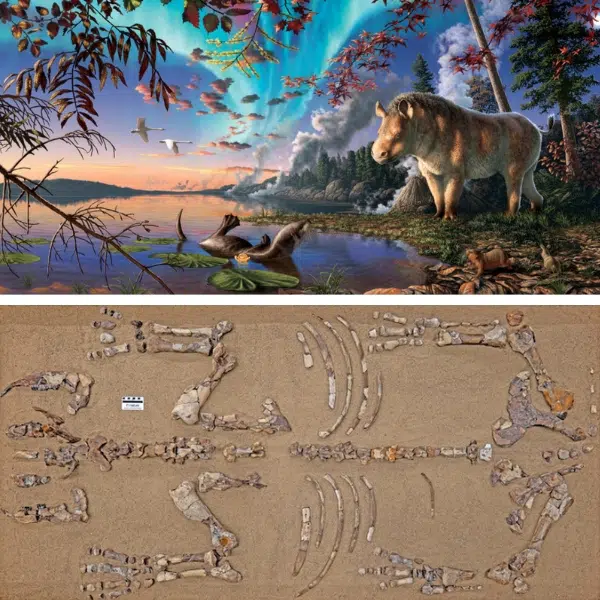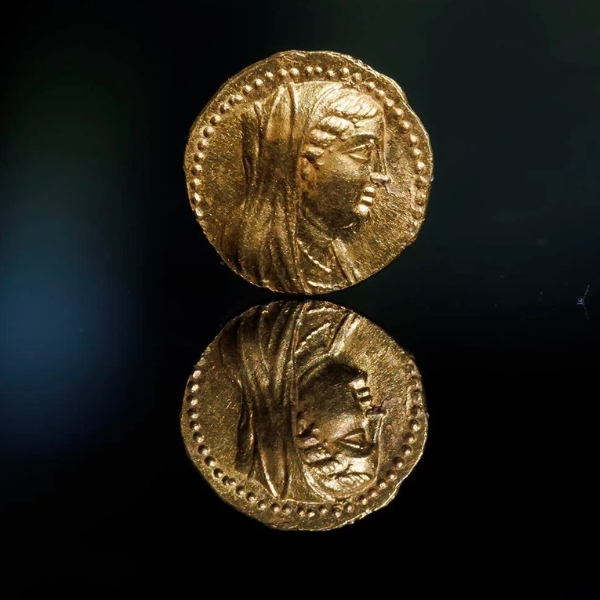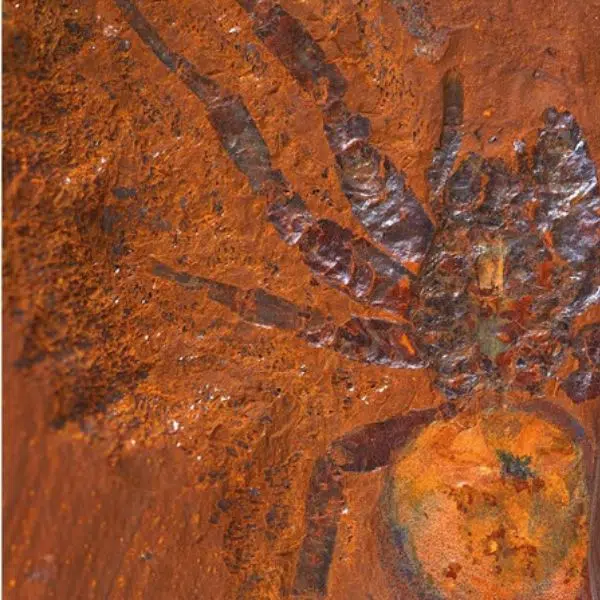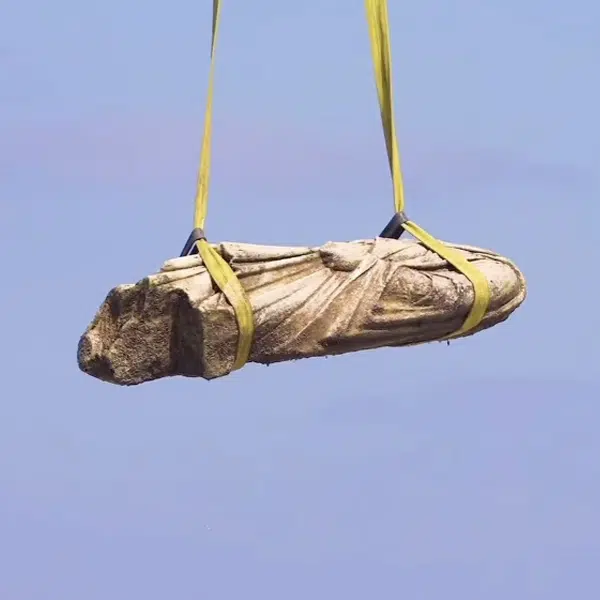
The statue of Gaius Marius Hermogenes. (Photo: Varna Regional Museum of History)
How would you wish to be remembered long after you are gone? Many people choose their tombstone, while others leave the decision to family after they are gone. This monumental dilemma is an ancient one. The ancient Greeks, Romans, Egyptians, and others spent vast amounts of time planning for their entombment and memorialization. The tombstones and stele of the ancients are a huge part of the archeological record, particularly in lands once ruled by the Roman Empire. Among these lands is modern Bulgaria, and among those who crafted their own legacy was a man who lived in the ancient city of Odessos. The statue of himself he had erected has recently been discovered, a shockingly well-preserved example of a Roman citizen.
The statue was unearthed in Varna, Bulgaria, during a survey of a construction site. It is slightly larger than life, carved from white marble. Researchers believe it was carved in the late second or early third century CE. Shockingly intact for its age, only its right arm and nose have been lost to time.
The figure wears a draped toga and clutches a scroll. He sports short curls carved with distinct realism. His sandaled feet rest on a plinth. The front of the plinth is inscribed with a phrase in Greek. Despite being a Roman city, Odessos continued to use the Greek language.
The inscription reads, “Gaius Marius Hermogenes set up this statue for himself in his lifetime.” Gaius was likely a prominent local citizen from this outpost of empire. The reference to erecting the statue during his own lifetime is intriguing, as it likely was (or became) part of his tomb.
Planning for his own death, Gaius managed to leave a memory which resounded almost 2,000 years later. The statue will be cleaned and conserved at the Archaeological Museum of Varna. According to a statement from the museum, it is the “first fully preserved statue from the ancient era in Varna and one of the rarest in Bulgaria.”
This rarity will soon be on exhibit for all to see at the Archaeological Museum of Varna.
In Varna, Bulgaria, a pristine statue of an ancient Roman citizen, erected by himself in his own honor, has been uncovered.
It was unearthed in near-perfect condition while surveying a location for construction.
h/t: [Good News Network]
Related Articles:
Art History: Ancient Practice of Textile Art and How It Continues to Reinvent Itself
Sister Duo Weaves Textured Wall Hangings Inspired by Australian Landscapes
How to Crochet: Learn the Basics of This Time Honored Handicraft
Artist Fills Forest with Life-Size Sculptures Made from Woven Rods of Willow
